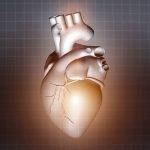Association Spotlight: AANMC
JoAnn Yanez, ND, MPH
Naturopathic News
Association of Accredited Naturopathic Medical Colleges (AANMC)
If you are even reading the news sporadically, you know the impact that pain has on the health and wellness of North Americans. From rock icons to moms, dads, brothers, sisters, sons, and daughters, pain does not discriminate. According to the American Academy of Pain Medicine, approximately 20% of Americans report pain interrupting sleep a few nights a week or more.1
Each year tens of thousands of patients are seen at the Association of Accredited Naturopathic Medical Colleges (AANMC) member school naturopathic medical centers across North America, many for pain-related conditions. Student clinicians work alongside expert faculty to provide comprehensive naturopathic approaches to many conditions, including pain, and use the multitude of tools in the naturopathic toolbox to do so successfully.
One of those key tools is managing pain without pharmaceuticals. Naturopathic medicine uses a whole-body approach, which makes it uniquely effective at helping individuals overcome addiction. Naturopathic doctors partner with patients to fully understand their experience with pain. They get to the root cause, considering lifestyle, diet, leisure and work activities, stress, and past injuries. Once the naturopathic doctor has determined the root cause of pain, they then draw from all the naturopathic modalities, including natural therapies, to effectively relieve pain without the side effects of many conventional drugs.
How the Naturopathic Colleges Address Pain & Opiate Addiction
Can a naturopathic education provide an answer to the opiate addiction crisis? We think so! The AANMC member schools are addressing how to treat pain without pharmaceuticals in their naturopathic curriculum.
National University of Natural Medicine
In late 2016, Oregon made the national headlines for having the second highest rate of opioid abuse in the nation. According to the Oregon Health Authority, an average of 3 Oregonians die each week from prescription opioid overdoses. National University of Natural Medicine (NUNM) proactively identified this issue and addressed it by putting a greater focus on pain education in the redesign of the naturopathic medicine curriculum, launched in 2015. NUNM Associate Dean of Academics and Residencies, Leslie Fuller, ND, said NUNM significantly increased the number of required neurology and musculoskeletal credit hours for students. She said that NUNM also offers its 3rd and 4th year naturopathic students an elective exploring the pathophysiology of pain mechanisms, patient treatment options, and how to best discuss pain with patients.
National University of Health Sciences
The National University of Health Sciences (NUHS) provides students with a very thorough basis of the understanding of the neurological pathways and the basis of pain. They also invite to the campus industry experts, such as Gracie Bagosy-Young, who provide special insight into various topics. Ms Bagosy-Young, who participated in a recent NUHS grand grounds, administers a very large pain advocacy network, a large regional pain conference, and lectures on pain syndromes such as Complex Regional Pain Syndrome/Reflex Sympathetic Dystrophy.
NUHS is also reviewing their curriculum, with the aim of offering more in-depth instruction on the endocannabinoid system and the use of cannabidiol (CBD) oils, including how medical cannabis impacts pain. In addition, the Assistant Dean for Naturopathic Medicine and a research assistant are currently creating a database for faculty and students on some of the most current medical literature on pain.
Southwest College of Naturopathic Medicine
Naturopathic students are trained to take a whole-body approach such that patients can manage pain and overcome addiction naturally. Southwest College of Naturopathic Medicine & Health Sciences (SCNM) hosts an on-site pain relief center (where students treat patients utilizing multiple, alternative pain-management approaches), hosts 3 extended-site clinics (where their students help patients overcome addiction to opiates), and offers courses in addiction and pain management. SCNM provides numerous opportunities for their students to learn about non-opioid pain management.
Bastyr University
Bastyr University teaches students in their naturopathic medicine program to take a holistic, integrated care approach to chronic pain. The Bastyr Center for Natural Health’s Integrative Pain Management Clinic is a model of interdisciplinary patient care. Students are taught in both the classroom and in their clinical training that comprehensive care of patients involves consideration of all aspects of naturopathic medicine, such as nutrition, physical (hands-on) medicine, hydrotherapy, botanical medicine, nutritional supplements, homeopathy, and mind-body therapies tailored to each individual.
Boucher Institute of Naturopathic Medicine
The Boucher Institute of Naturopathic Medicine (BINM)’s teaching clinics also utilize an integrated approach to pain management, with a strong emphasis on physical medicine. In addition to combining naturopathic modalities, the clinic has 2 state-of-the-art cold-laser machines that have proved to be very effective in pain management. At Boucher’s satellite clinic, Friends for Life, students apply cost-effective solutions, in particular acupuncture, hydrotherapy, and physical medicine for pain management, while also learning to provide palliative care for low-income patients.
Summary
Chronic pain is a complex and subjective experience, and cannot be separated from the context of an individual’s life. Every patient is unique, as are the contributing factors to their chronic pain. This makes naturopathic, personalized treatment plans essential. Naturopathic students are taught this very important principle of naturopathic medicine throughout the naturopathic curriculum at all AANMC member schools.
The mission of the AANMC is to enhance the individual and collective success of member organizations in delivering high-quality, innovative, and accessible naturopathic medical education and research. For more information on the AANMC and the cutting-edge work of its member schools, please visit www.aanmc.org.
References:
- American Academy of Pain Medicine. Facts and Figures on Pain. AAPM Web site. http://www.painmed.org/files/facts-and-figures-on-pain.pdf. Accessed April 1, 2017.










